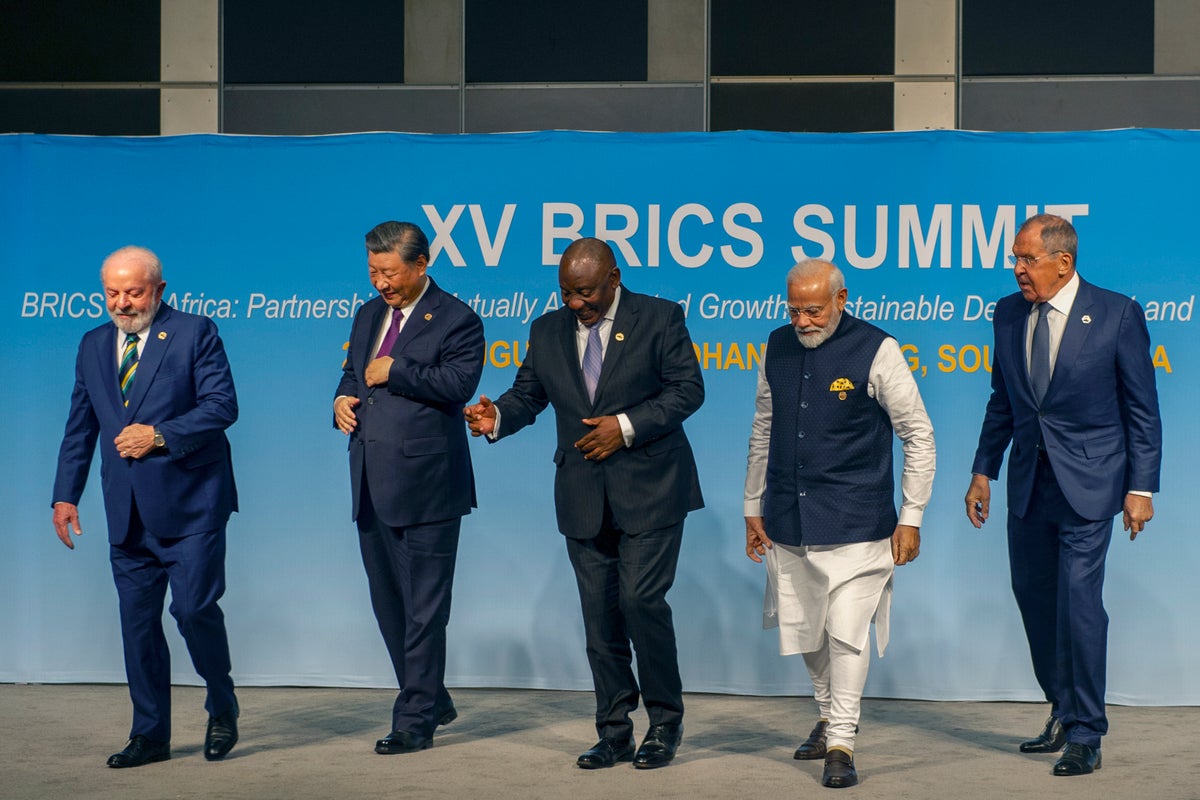
Indian Prime Minister Narendra Modi says his country is “becoming the voice of the Global South,” and that at the upcoming Group of 20 meetings being held in New Delhi, that voice will be heard.
At the August summit of the BRICS nations — Brazil, Russia, India, China and South Africa — current chair South Africa declared its goal was to "advance the agenda of the Global South.” And ahead of this May's summit of the Group of Seven wealthy democracies in Hiroshima, Japanese Prime Minister Fumio Kishida stressed that the guest nations he had invited reflected the importance of the Global South.
The United Nations, the World Bank, U.S. President Joe Biden — everyone seems to be talking about the Global South these days. But what, exactly, is it?
What constitutes the Global South?
Despite how it sounds, it's not really a geographical term. Many countries included in the Global South are in the northern hemisphere, such as India, China and all of those in the northern half of Africa. Australia and New Zealand, both in the southern hemisphere, are not in the Global South.
Most cite the so-called Brandt Line as the border; a squiggle across the globe running from the north of Mexico, across the top of Africa and the Middle East, looping around India and China before dropping down to encompass most of East Asia while avoiding Japan, Australia and New Zealand. The line was proposed by former German Chancellor Willy Brandt in the 1980s as a visual depiction of the north-south divide based upon per-capita GDP.
“The Global South is a geographical, geopolitical, historical and developmental concept, all at the same time — with exceptions,” says Happymon Jacob, founder of the New Delhi-based Council for Strategic and Defense Research.
Which countries make up the Global South?
It's complicated, and often depends upon who is using the phrase.
Most commonly the term refers to the countries belonging to the Group of 77 at the United Nations, which, confusingly, is today actually a coalition of 134 countries. They're primarily considered developing countries, but also include China — about which there is some debate — and several wealthy Gulf states.
Though the G77 is a group at the U.N., the U.N. itself does not use that as its own definition, according to Rolf Traeger, who is with the U.N.’s trade and development office.
For the U.N., Global South is something of a shortcut to refer to developing countries in general, Traeger said. The U.N. currently lists 181 jurisdictions as developing countries or territories, and 67 jurisdictions as developed, he said.
In January, India's Modi hosted a virtual “Voice of the Global South Summit.” It only included 125 countries, however, with India's regional rivals China and Pakistan among the notable absentees.
Some use different criteria, such as whether a country was previously colonized or whether a nation's per-capita GDP is above $15,000.
There is also a Global North, though the term is not regularly used. That is defined basically as not the Global South.
Should we use the term Global South?
The term Global South first appeared in the 1960s, but took time to gain traction.
Following the end of the Cold War, the terms First World, Second World and Third World started to fall out of favor, partly because with the fall of the Soviet Union the Second World ceased to exist, and also because the use of Third World came to be seen as derogatory.
No matter how you define it, the Global South accounts for such a vast majority of the world's population and broad swath of territory that some argue it's impossible and misleading to use the label.
How can countries like China and India, each with about 1.4 billion people and GDPs of about $18 trillion and $3.4 trillion respectively, be lumped together with the Pacific island nation of Vanuatu, with a population a little over 300,000 and a GDP of $984 million, or the southern African nation of Zambia with 19 million people and a GDP of $30 billion?
Some also fret that China, which is assertively seeking to expand its global influence, could misuse the grouping to push its own agenda while giving the impression that it speaks for the majority of the world.
It has been speculated that that was behind the decision in May of the G7 nations — all Global North countries — to refrain from using “Global South” in their final summit communique, even though Kishida himself favors it.
“There is every danger that the Global South will end up becoming a weapon in the hands of revisionist states, like China, who would want to use the voice of the Global South to promote their great power interests,” says Happymon Jacob.
For his part, Modi has stressed the commonality of many issues facing the Global South, such as emerging from the COVID-19 pandemic, rising debt, and food and energy security.
Ian Lesser, vice president of the German Marshall Fund and director of its Brussels office, notes that most discomfort with the term comes from Global North countries, and that “Global South” is widely used by the countries that make it up.
Even though the Global South is not a group with a monolithic view or widespread uniformity, he says what's important is that it reflects how the group sees itself.
“There is embedded in it a notion that not all strategies need to be made in the West,” Lesser said.
"For some this is simply a way to assert a degree of historic independence and distance on key issues … and it is affecting the way Europe and the United States think about foreign policy, and the idea that we need to live in a world where not everyone will be on the same page with us on every issue."







